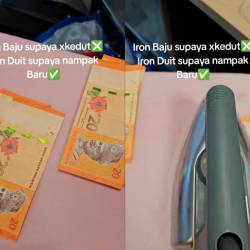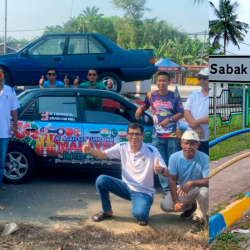TEXT-From Burr to Clinton, Supreme Court takes history tour in Trump wealth case
WASHINGTON, July 9 (Reuters) - Supreme Court Chief Justice John Roberts drew on over 200 years of legal precedent to conclude on Thursday that a New York prosecutor can obtain U.S. President Donald Trump's financial records.
The court's ruling does not mean the documents will be handed over immediately because of expected wrangling in lower courts, and the outcome could be delayed until after the Nov. 3 election.
In a nearly 6,000-word majority opinion https://tinyurl.com/y9ytp99e in Trump vs. Vance, Roberts relied on the 1807 trial of Aaron Burr, former vice president, on charges of treason to set the stage.
He then referred to multiple instances of other sitting presidents who have complied with prosecutors' requests before concluding that "no citizen, not even the President, is categorically above the common duty to produce evidence when called upon in a criminal proceeding."
Here are some key excerpts.
In the summer of 1807, all eyes were on Richmond, Virginia. Aaron Burr, the former Vice President, was on trial for treason. Fallen from political grace after his fatal duel with Alexander Hamilton, and with a murder charge pending in New Jersey, Burr followed the path of many down-and-out Americans of his day — he headed West in search of new opportunity. But Burr was a man with outsized ambitions. Together with General James Wilkinson, the Governor of the Louisiana Territory, he hatched a plan to establish a new territory in Mexico, then controlled by Spain.
Both men anticipated that war between the United States and Spain was imminent, and when it broke out they intended to invade Spanish territory at the head of a private army. But while Burr was rallying allies to his cause, tensions with Spain eased and rumors began to swirl that Burr was conspiring to detach States by the Allegheny Mountains from the Union. Wary of being exposed as the principal coconspirator, Wilkinson took steps to ensure that any blame would fall on Burr. He sent a series of letters to President Jefferson accusing Burr of plotting to attack New Orleans and revolutionize the Louisiana Territory.
Jefferson, who despised his former running mate Burr for trying to steal the 1800 presidential election from him, was predisposed to credit Wilkinson's version of events. The President sent a special message to Congress identifying Burr as the "prime mover" in a plot "against the peace and safety of the Union." 16 Annals of Cong. 39–40 (1807). According to Jefferson, Burr contemplated either the "severance of the Union" or an attack on Spanish territory. Id., at 41.
Jefferson acknowledged that his sources contained a "mixture of rumors, conjectures, and suspicions" but, citing Wilkinson's letters, he assured Congress that Burr's guilt was "beyond question." Id., at 39–40.
The trial that followed was "the greatest spectacle in the short history of the republic," complete with a Founder-studded cast. People flocked to Richmond to watch, massing in tents and covered wagons along the banks of the James River, nearly doubling the town's population of 5,000.
Burr's defense team included Edmund Randolph and Luther Martin, both former delegates at the Constitutional Convention and renowned advocates. Chief Justice John Marshall, who had recently squared off with the Jefferson administration in Marbury v. Madison, 1 Cranch 137 (1803), presided as Circuit Justice for Virginia. Meanwhile Jefferson, intent on conviction, orchestrated the prosecution from afar, dedicating Cabinet meetings to the case, peppering the prosecutors with directions, and spending nearly $100,000 from the Treasury on the five-month proceedings.
In the lead-up to trial, Burr, taking aim at his accusers, moved for a subpoena duces tecum directed at Jefferson. The draft subpoena required the President to produce an October 21, 1806 letter from Wilkinson and accompanying documents, which Jefferson had referenced in his message to Congress.
The prosecution opposed the request, arguing that a President could not be subjected to such a subpoena and that the letter might contain state secrets. Following four days of argument, Marshall announced his ruling to a packed chamber.
The President, Marshall declared, does not 'stand exempt from the general provisions of the constitution' or, in particular, the Sixth Amendment's guarantee that those accused have compulsory process for obtaining witnesses for their defense.
At common law the 'single reservation' to the duty to testify in response to a subpoena was 'the case of the king,' whose 'dignity' was seen as 'incompatible' with appearing 'under the process of the court.' But, as Marshall explained, a king is born to power and can 'do no wrong.'
The President, by contrast, is 'of the people' and subject to the law. According to Marshall, the sole argument for exempting the President from testimonial obligations was that his 'duties as chief magistrate demand his whole time for national objects.' But, in Marshall's assessment, those demands were 'not unremitting.' Ibid. And should the President's duties preclude his attendance at a particular time and place, a court could work that out upon return of the subpoena.
Marshall also rejected the prosecution's argument that the President was immune from a subpoena duces tecum because executive papers might contain state secrets.
"A subpoena duces tecum," he said, "may issue to any person to whom an ordinary subpoena may issue." Ibid. As he explained, no "fair construction" of the Constitution supported the conclusion that the right "to compel the attendance of witnesses does not extend" to requiring those witnesses to "bring with them such papers as may be material in the defense." Id., at 35. And, as a matter of basic fairness, permitting such information to be withheld would "tarnish the reputation of the court." Id., at 37. As for "the propriety of introducing any papers," that would "depend on the character of the paper, not on the character of the person who holds it." Id., at 34.
Marshall acknowledged that the papers sought by Burr could contain information "the disclosure of which would endanger the public safety," but stated that, again, such concerns would have "due consideration" upon the return of the subpoena. Id., at 37.
While the arguments unfolded, Jefferson, who had received word of the motion, wrote to the prosecutor indicating that he would—subject to the prerogative to decide which executive communications should be withheld—"furnish on all occasions, whatever the purposes of justice may require."
His "personal attendance," however, was out of the question, for it "would leave the nation without" the "sole branch which the constitution requires to be always in function."
Before Burr received the subpoenaed documents, Marshall rejected the prosecution's core legal theory for treason and Burr was accordingly acquitted. Jefferson, however, was not done. Committed to salvaging a conviction, he directed the prosecutors to proceed with a misdemeanor (yes, misdemeanor) charge for inciting war against Spain. Burr then renewed his request for Wilkinson's October 21 letter, which he later received a copy of, and subpoenaed a second letter, dated November 12, 1806, which the prosecutor claimed was privileged.
Acknowledging that the President may withhold information to protect public safety, Marshall instructed that Jefferson should "state the particular reasons" for withholding the letter. United States v. Burr, 25F. Cas. 187, 192 (No. 14,694) (CC Va. 1807). The court, paying "all proper respect" to those reasons, would then decide whether to compel disclosure. Ibid. But that decision was averted when the misdemeanor trial was cut short after it became clear that the prosecution lacked the evidence to convict.
In the two centuries since the Burr trial, successive Presidents have accepted Marshall's ruling that the Chief Executive is subject to subpoena. In 1818, President Monroe received a subpoena to testify in a court-martial against one of his appointees. See Rotunda, Presidents and Ex-Presidents as Witnesses: A Brief Historical Footnote, 1975 U. Ill. L. Forum 1, 5. His Attorney General, William Wirt—who had served as a prosecutor during Burr's trial—advised Monroe that, per Marshall's ruling, a subpoena to testify may "be properly awarded to the President." Id., at 5–6.
Monroe offered to sit for a deposition and ultimately submitted answers to written interrogatories.
***
Following Monroe's lead, his successors have uniformly agreed to testify when called in criminal proceedings, provided they could do so at a time and place of their choosing. In 1875, President Grant submitted to a three-hour deposition in the criminal prosecution of a political appointee embroiled in a network of tax-evading whiskey distillers. See 1 R. Rotunda & J. Nowak, Constitutional Law §7.1(b)(ii), p. 996 (5th ed. 2012) (Rotunda & Nowak).
A century later, President Ford's attempted assassin subpoenaed him to testify in her defense. Ford obliged — from a safe distance — in the first videotaped deposition of a President.
President Carter testified via the same means in the trial of two local officials who, while Carter was Governor of Georgia, had offered to contribute to his campaign in exchange for advance warning of any state gambling raids.(Carter recounted that he "rejected the proposition instantly."). Two years later, Carter gave videotaped testimony to a federal grand jury investigating whether a fugitive financier had entreated the White House to quash his extradition proceedings.
President Clinton testified three times, twice via deposition pursuant to subpoenas in federal criminal trials of associates implicated during the Whitewater investigation, and once by video for a grand jury investigating possible perjury.
The bookend to Marshall's ruling came in 1974 when the question he never had to decide — whether to compel the disclosure of official communications over the objection of the President — came to a head. That spring, the Special Prosecutor appointed to investigate the break-in of the Democratic National Committee Headquarters at the Watergate complex filed an indictment charging seven defendants associated with President Nixon and naming Nixon as an unindicted co-conspirator.
As the case moved toward trial, the Special Prosecutor secured a subpoena duces tecum directing Nixon to produce, among other things, tape recordings of Oval Office meetings. Nixon moved to quash the subpoena, claiming that the Constitution provides an absolute privilege of confidentiality to all presidential communications. This Court rejected that argument in United States v. Nixon, 418 U. S. 683 (1974), a decision we later described as "unequivocally and emphatically endors Marshall's" holding that Presidents are subject to subpoena.
The Nixon Court readily acknowledged the importance of preserving the confidentiality of communications "between high Government officials and those who advise and assist them." 418 U. S., at 705. "Human experience," the Court explained, "teaches that those who expect public dissemination of their remarks may well temper candor with a concern for appearances and for their own interests to the detriment of the decisionmaking process."
Confidentiality thus promoted the "public interest in candid, objective, and even blunt or harsh opinions in Presidential decisionmaking." Id., at 708.
But, like Marshall two centuries prior, the Court recognized the countervailing interests at stake. Invoking the common law maxim that "the public has a right to every man's evidence," the Court observed that the public interest in fair and accurate judicial proceedings is at its height in the criminal setting, where our common commitment to justice demands that "guilt shall not escape" nor "innocence suffer."
Because these dual aims would be "defeated if judgments" were "founded on a partial or speculative presentation of the facts," the Nixon Court recognized that it was "imperative" that "compulsory process be available for the production of evidence needed either by the prosecution or the defense." The Court thus concluded that the President's "generalized assertion of privilege must yield to the demonstrated, specific need for evidence in a pending criminal trial."
Two weeks later, President Nixon dutifully released the tapes.
***
Marshall's ruling in Burr, entrenched by 200 years of practice and our decision in Nixon, confirms that federal criminal subpoenas do not "rise to the level of constitutionally forbidden impairment of the Executive's ability to perform its constitutionally mandated functions." Clinton, 520 U. S., at 702–703.
But the President, joined in part by the Solicitor General, argues that state criminal subpoenas pose a unique threat of impairment and thus demand greater protection. To be clear, the President does not contend here that this subpoena, in particular, is impermissibly burdensome. Instead he makes a categorical argument about the burdens generally associated with state criminal subpoenas, focusing on three: diversion, stigma, and harassment.
We address each in turn.
***
The President, however, believes the district attorney is investigating him and his businesses. In such a situation, he contends, the "toll that criminal process . . . exacts from the President is even heavier" than the distraction at issue in Fitzgerald and Clinton, because "criminal litigation" poses unique burdens on the President's time and will generate a "considerable if not overwhelming degree of mental additional distraction caused by the subpoena itself. But that argument runs up against the 200 years of precedent establishing that Presidents, and their official communications, are subject to judicial process, see Burr, 25 F. Cas., at 34, even when the President is under investigation, see Nixon, 418 U. S., at 706...
The President next claims that the stigma of being subpoenaed will undermine his leadership at home and abroad. Notably, the Solicitor General does not endorse this argument, perhaps because we have twice denied absolute immunity claims by Presidents in cases involving allegations of serious misconduct. See Clinton, 520 U. S., at 685; Nixon, 418 U. S., at 687. But even if a tarnished reputation were a cognizable impairment, there is nothing inherently stigmatizing about a President performing "the citizen's normal duty of . . . furnishing information relevant" to a criminal investigation. Branzburg v. Hayes, 408 U. S. 665, 691 (1972).
Nor can we accept that the risk of association with persons or activities under criminal investigation can absolve a President of such an important public duty. Prior Presidents have weathered these associations in federal cases, supra, at 6–10, and there is no reason to think any attendant notoriety is necessarily greater in state court proceedings.
To be sure, the consequences for a President's public standing will likely increase if he is the one under investigation. But, again, the President concedes that such investigations are permitted under Article II and the Supremacy Clause, and receipt of a subpoena would not seem to categorically magnify the harm to the President's reputation.
Additionally, while the current suit has cast the Mazars subpoena into the spotlight, longstanding rules of grand jury secrecy aim to prevent the very stigma the President anticipates.
**** [The Solicitor General and Justice Alito] argue that even if federal subpoenas to a President are warranted whenever evidence is material, state subpoenas are warranted "only when evidence is essential." Brief for United States as Amicus Curiae 28; see post, at 16. But that double standard has no basis in law. For if the state subpoena is not issued to manipulate, supra, at 16–17, the documents themselves are not protected, supra, at 18, and the Executive is not impaired, supra, at 12–15, then nothing in Article II or the Supremacy Clause supports holding state subpoenas to a higher standard than their federal counterparts.
Finally, in the absence of a need to protect the Executive, the public interest in fair and effective law enforcement cuts in favor of comprehensive access to evidence. Requiring a state grand jury to meet a heightened standard of need would hobble the grand jury's ability to acquire "all information that might possibly bear on its investigation." R. Enterprises, Inc., 498 U. S., at 297.
And, even assuming the evidence withheld under that standard were preserved until the conclusion of a President's term, in the interim the State would be deprived of investigative leads that the evidence might yield, allowing memories to fade and documents to disappear. This could frustrate the identification, investigation, and indictment of third parties (for whom applicable statutes of limitations might lapse). More troubling, it could prejudice the innocent by depriving the grand jury of exculpatory evidence.
***
Two hundred years ago, a great jurist of our Court established that no citizen, not even the President, is categorically above the common duty to produce evidence when called upon in a criminal proceeding. We reaffirm that principle today and hold that the President is neither absolutely immune from state criminal subpoenas seeking his private papers nor entitled to a heightened standard of need.
The "guard furnished to this high officer" lies where it always has—in "the conduct of a court" applying established legal and constitutional principles to individual subpoenas in a manner that preserves both the independence of the Executive and the integrity of the criminal justice system. Burr, 25 F. Cas., at 34.
The arguments presented here and in the Court of Appeals were limited to absolute immunity and heightened need. The Court of Appeals, however, has directed that the case be returned to the District Court, where the President may raise further arguments as appropriate. 941 F. 3d, at 646, n. 19.6
We affirm the judgment of the Court of Appeals and remand the case for further proceedings consistent with this opinion. It is so ordered. (Reporting by Heather Timmons Editing by Alistair Bell)






